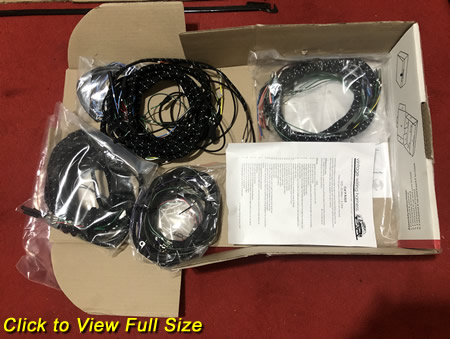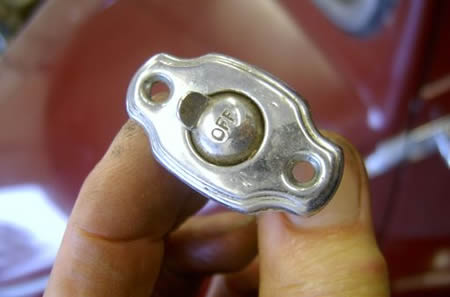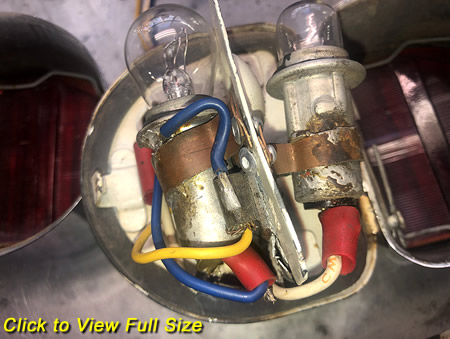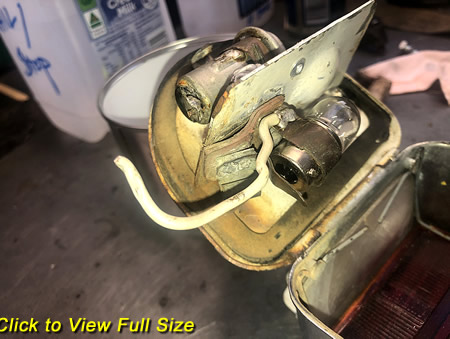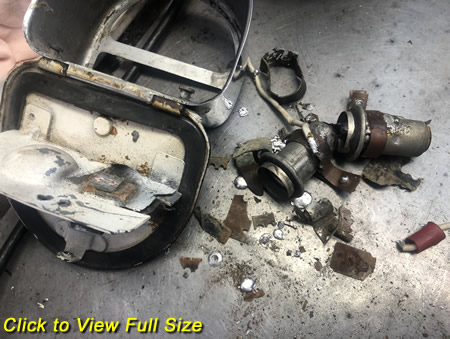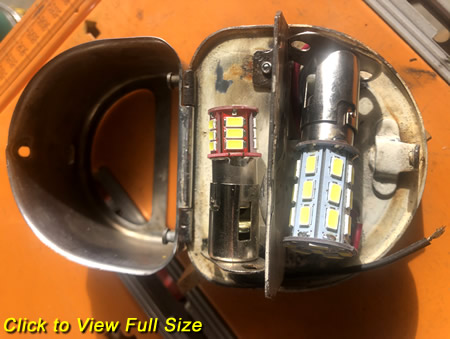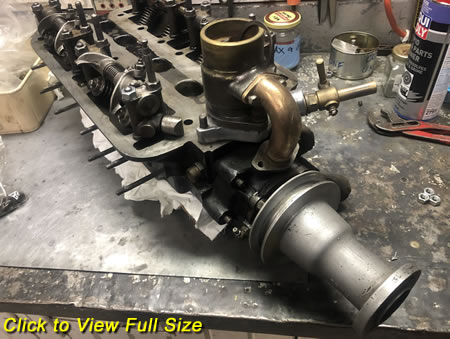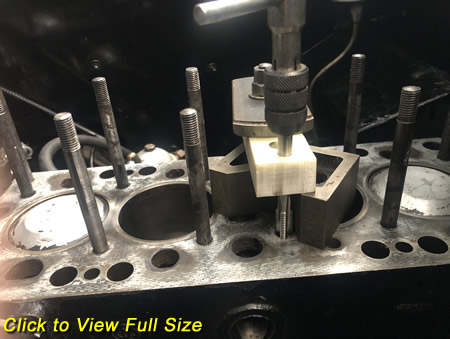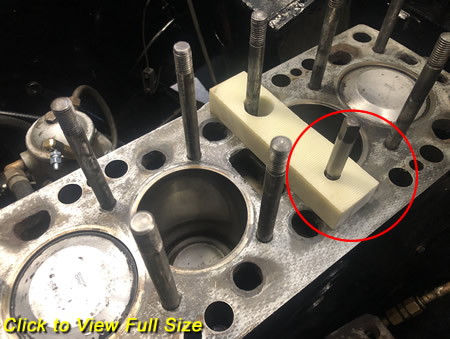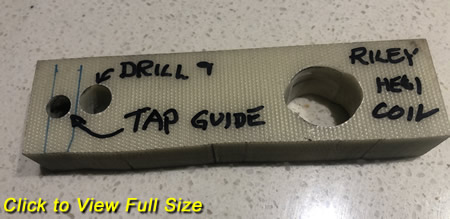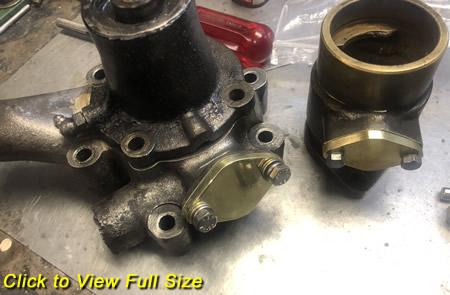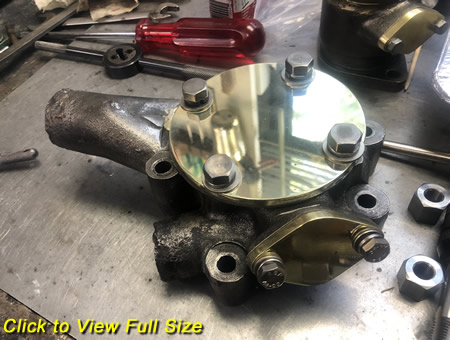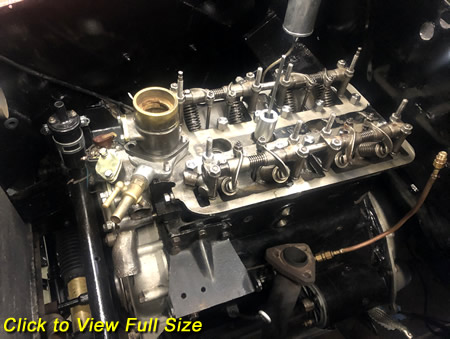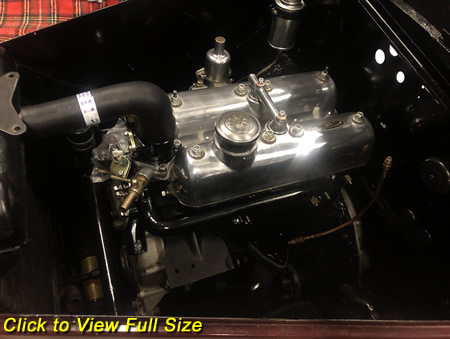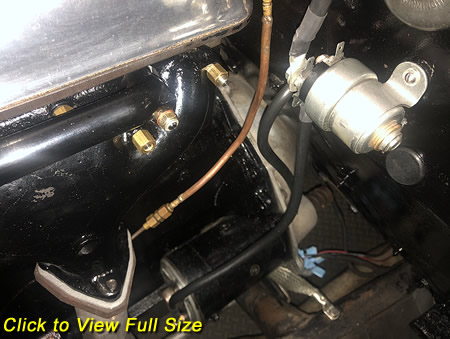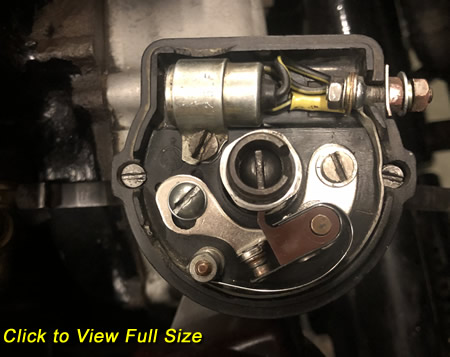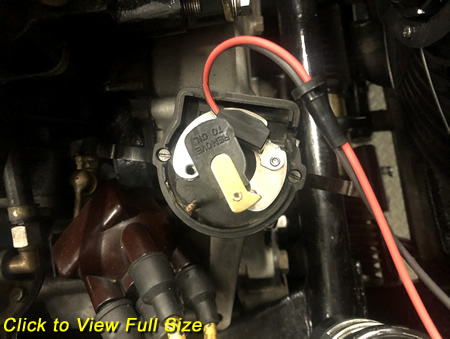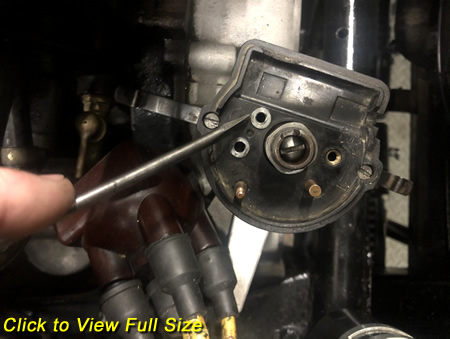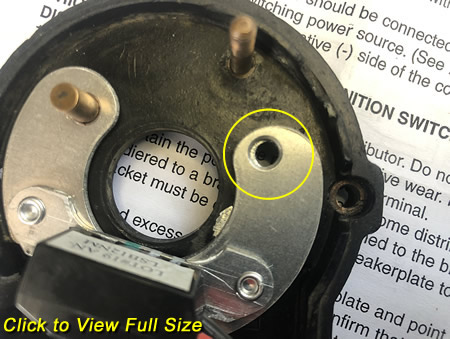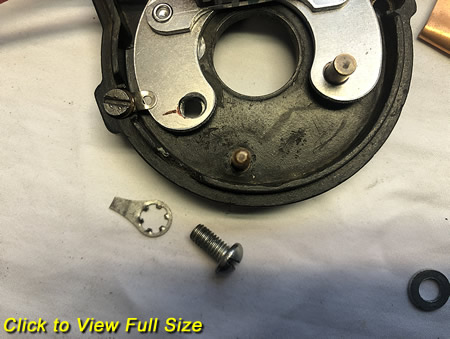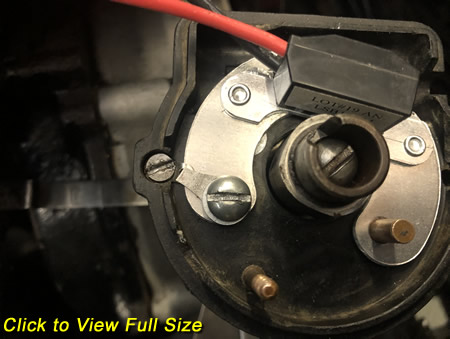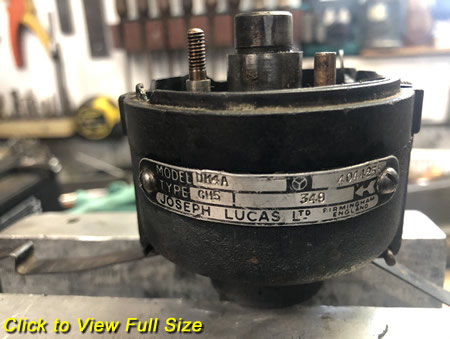"Ruby" the Riley Pages: 1 2 3 4 5 6 7 8 9 10 11(new) UPDATED: 22 August 2021 |
VIDEO: - This little video shows a bench test of the Lucas type CRT windscreen wiper mechanism to check if all will be well when it is installed. All the old grease was cleaned out and replaced with a low viscosity Moly grease.
|
In some cases it is good to have photos to show how parts go back together. In this case the wiper "wheelbox" and the screen demister AND the support for the top end of the steering column (under the wheelbox). NOTE - it was pity I hadn't check the dismantling photos as I had fitted the N/S wheelbox UPSIDE DOWN!
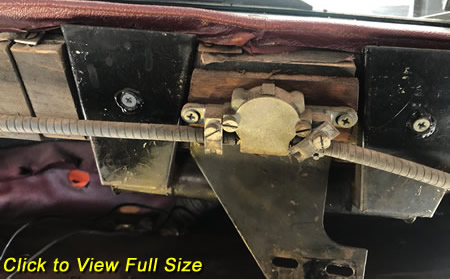 |
This doesn't look much but it will provide a working pattern for making a new leathercloth covering for the parcel shelf.
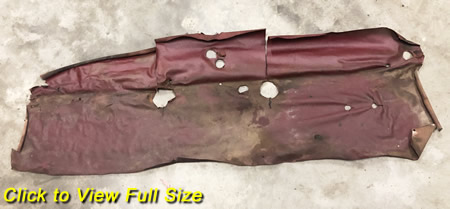 |
Stored "refreshed" parts are building up in the spare room.
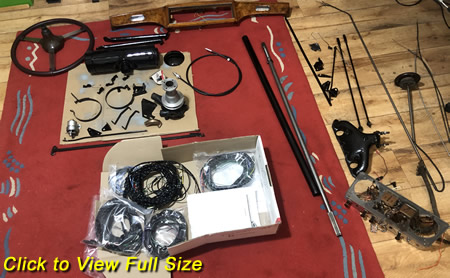 |
One of life's little mysteries? My Riley RME has 2 interior lights and the instruction book says "operated by means of individual switches attached to each unit" I give up - I can't find them or it! Where are they? 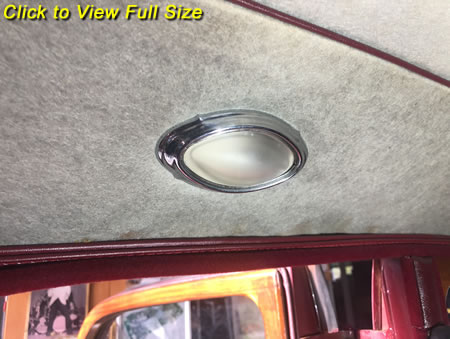 I'm pretty sure I have found the switch - under the replaced headlining - above the driver's door. The web or the UK Forum revealed the shape of the interior switch |
|
VIDEO: - This little video shows one of the Trafficators rebuilt and fuctioning. The electro- mechanical mechanism was in fair condition and was carefully cleaned. The arm was broken but I was able to insert some pins into the plastic arm and epoxy it back together. Page 3 shows more details and the LED Module.
|
|
THIS was a bit of a setback. This is one of the head studs which obviously needed replacing as it's stripped in the block. The LH end clearly shows that it is very stretched. I only use the recommended 40 ft-lbs. torque. I fitted a heli-coil (3/8" BSF) in the head and replaced all studs and nuts. 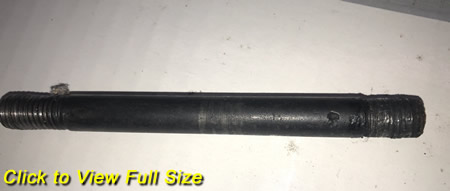 To make sure the drill and tap required in this fitting process are square to the block, I made a guide block from a very square & rigid piece of laminated fibreglass I had on hand. The opposite head stud will be used to clamp down the guide & here I have a 3/8" tap in the old hole to check whether the guide would work. |
|
This tool comes with the kit to screw in the heli coil. 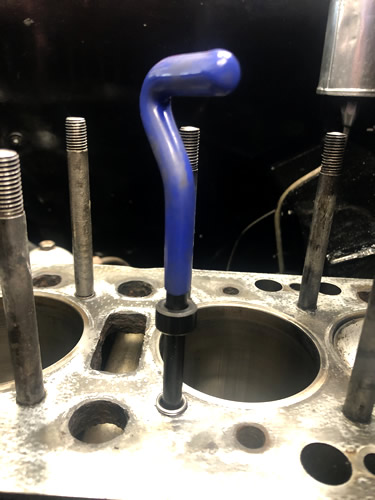 |
Time off to rebuild the single 1 1/4" SU 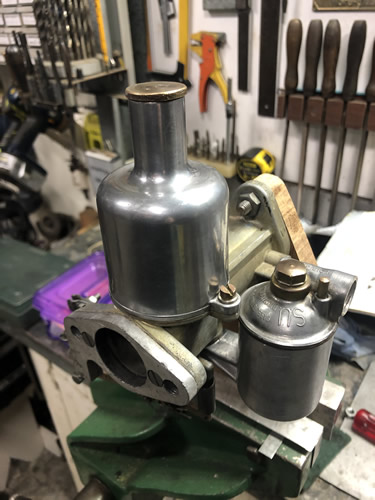 |
The parcel/ "glove" shelf had to be recovered before wiring could be installed. The first task was the safety switch which can be seen under the shelf. I can reach it from the driver's seat and it isolates the negative side of the battery from the engine-chassis ground (negative). . 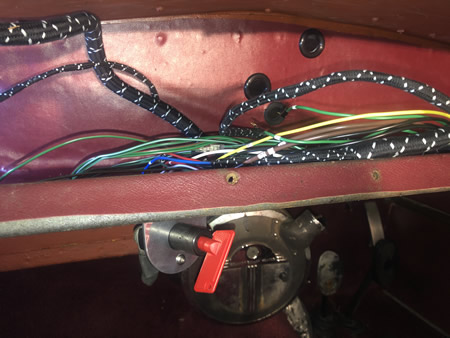 If the smoke starts to "get out" the switch is easily reached to cut off all power. It also provides limited security from casual theft. The new wiring loom is starting to go in when I get my head around the wiring diagram and the printed loom directions. |
|
VIDEO: - This little video was trial of the starter motor and solenoid, which was manually operated from the button on the near end. For normal starting the solenoid is activated electrically by the starter button. During this test I did a quick compression test and and was reasonably pleased. One little suggestion, don't leave your TDC tool screwed into the sparke plug hole - mine was launched into space but stopped by the shed roof and landed back neatly near where it started!! - shame I didn't get that in the video.
|
|
ELECTRONIC IGNITION 2.
I have been running electronic ignition systems for over 20 years and have been very impressed with the performance. They are an unobtrusive addition to a classic car fitted with a distributor. There will be little to suggest that there is such a sytem in the Riley. I never have to adjust points and have improved performance as a result of signifcantly higher kV at the plugs. 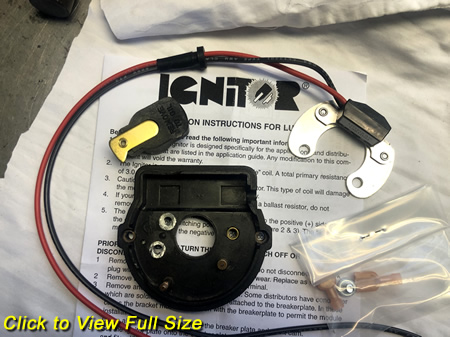 |
|
ELECTRONIC IGNITION 8. Soldering is done and the metal mounting plate is checked with a multimeter to see if it a perfect connection to earth (engine block). A normal coil is used for the Riley and should measure about 3 Ohms across the + & - terminals. The red wire goes to + on the coil and black to - 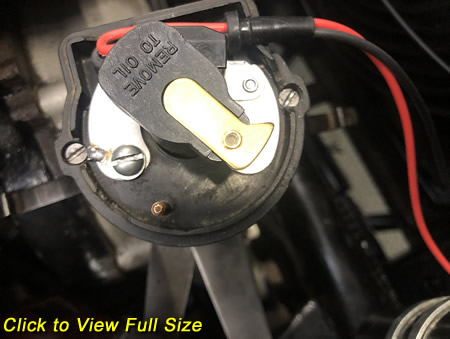 |
|
